Recent Articles
Popular Makes
Body Types
2021 Toyota RAV4 Hybrid vs. 2021 Hyundai Santa Fe HEV
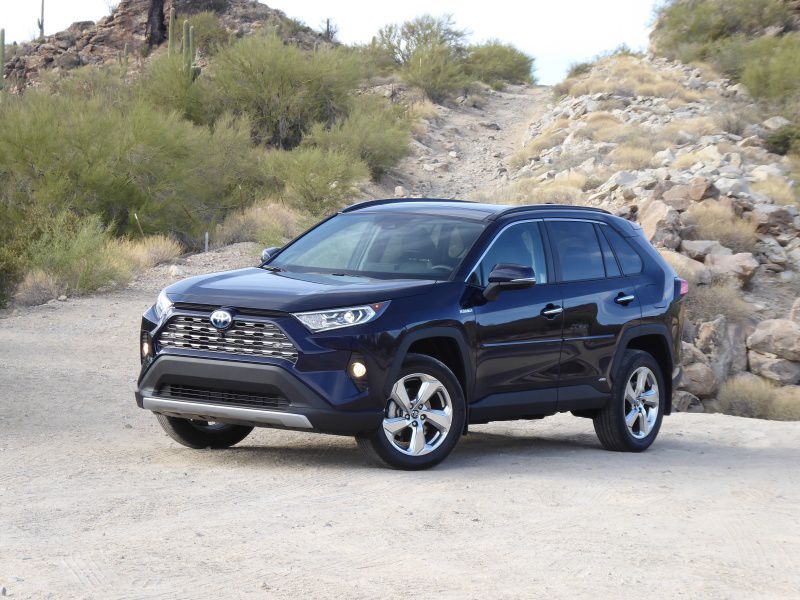
2021 Toyota RAV4 Hybrid ・ Photo by Ron Sessions
Look around you and you’ll see that compact and mid-size SUVs are everywhere. Every year, millions of these popular and versatile vehicles find new buyers in the U.S. Among these, the Toyota RAV4 is the best seller, as it has been since the current version was introduced for the 2019 model year. Toyota has also been a leader in offering fuel-efficient gas-electric hybrid versions for many of its products including the RAV4, which now has become the best-selling SUV with a hybrid powertrain.
As more SUV buyers deal with the escalating price of fuel and the environmentally minded are seeking ways to reduce their carbon footprint, automakers are looking to increase the electrification of their product offerings, whether it is with gas-electric hybrid, plug-in hybrid, or battery-electric vehicles.
Hyundai has been filling that space recently with gas-electric versions of the Elantra, Sonata, Ioniq, Tucson, and now the Santa Fe. The Santa Fe is technically a mid-size SUV, but one with two rows of seats that offers generous space for five passengers, much like the compact Toyota RAV4.
Both hybrid models come standard with all-wheel drive. Let’s see how the hybrid versions of the Toyota RAV4 and Hyundai Santa Fe SUVs compare to one another.
Styling and Design
As the RAV4 is the best-selling SUV, a lot of buyers have voted with their wallets as to what makes a good-looking vehicle. With the 2019 redesign, the RAV4 has adopted a more truck-like exterior design with hints of the rough-and-ready Toyota 4Runner SUV and Tacoma pickup. Also present and accounted for and suggesting off-road adventure are the RAV4’s Jeep Cherokee-like rectangular wheel flares.
The Santa Fe, on the other hand, went upscale with its facelifted appearance for 2021 which continues for 2022. There’s a newfound elegance to the broad, bold mesh grille and streamlined, high-mounted LED driving lamps up front that moves it closer to the softer, premium look of the Hyundai Palisade SUV.
Whether it’s the more adventurous-looking RAV4 or the more premium aura of the Santa Fe, there is no wrong choice here. Choose your favorite flavor.
: Tie
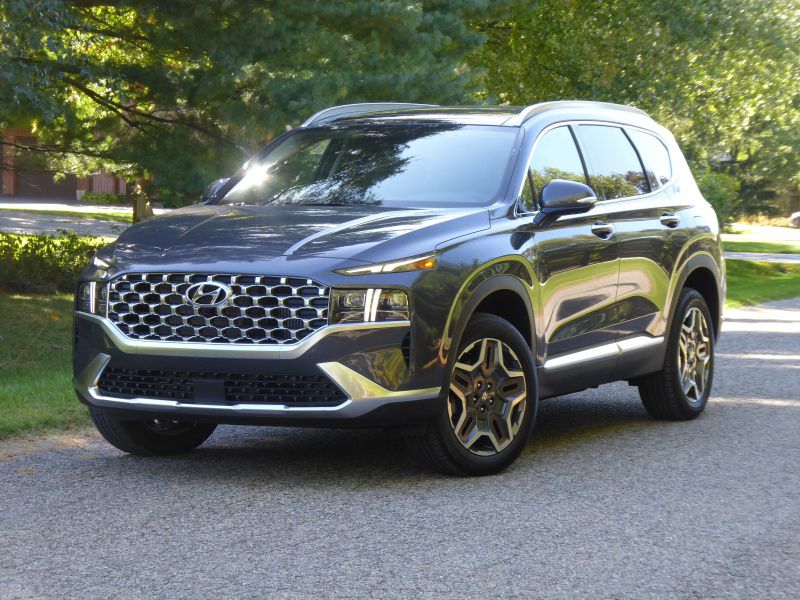
Photo by Ron Sessions
Cabin Comfort
When it comes to interior space, both the RAV4 and Santa Fe hybrids offer a surprisingly generous amount of room for passengers. However, the Santa Fe, with its longer wheelbase and 7.5 inches greater overall length, has the edge with plenty of stretch-out room in the back seat and 3 inches more rear legroom than the RAV4.
Overall, the Santa Fe Hybrid has a luxurious feel, with materials and switchgear that could easily pass muster in a Genesis luxury vehicle. The RAV4 Hybrid, on the other hand, presents a more rugged, truck motif with greater use of hard plastic trim and meatier-looking controls.
The RAV4 Hybrid’s front seats are comfortable and supportive with a choice of cloth or synthetic coverings, but no leather hides. The RAV4 Hybrid does not offer a power front passenger seat, but heated front seats and a leather-wrapped steering wheel are available in upper trims.
The Santa Fe Hybrid’s front chairs, however, are a cut above with heated cloth front seats and a power driver’s seat standard on the base Blue, leather seat coverings, a power front passenger seat, and a panoramic moonroof included with SEL trim, and ventilated front seats, a power leg cushion extender, driver seat memory, and a heated steering wheel added for the Limited model.
: Santa Fe Hybrid
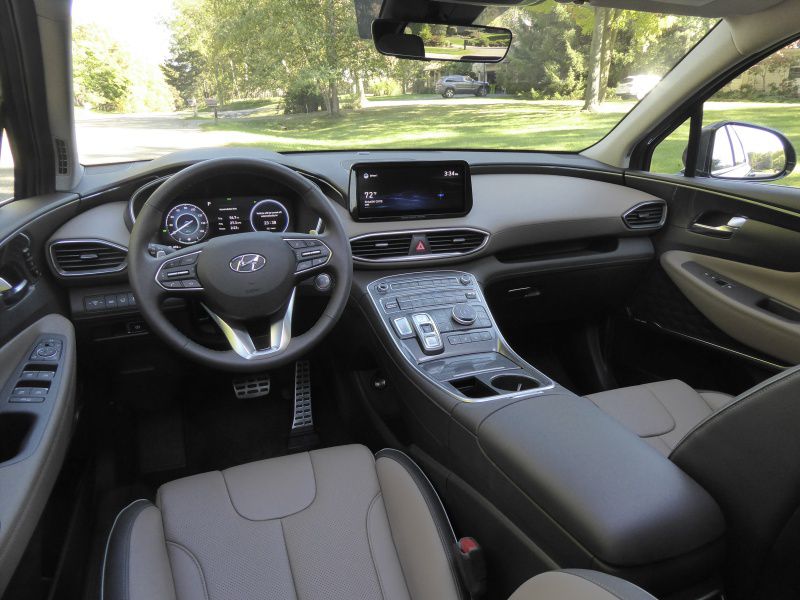
Photo by Ron Sessions
Cargo Considerations
One of the major reasons people buy SUVs is cargo-toting versatility and both the RAV4 Hybrid and Santa Fe hybrid offer plenty of it. Neither suffer any reduction in cargo space compared to their gas-powered versions due the large hybrid battery located under the floor.
With the rear seat up, the RAV4 Hybrid has a slight edge with 37.6 cubic feet of cargo space compared to the Santa Fe’s 36.4 cubic feet. Thanks to the Santa Fe Hybrid’s longer wheelbase, the opposite is true when the rear seat is folded flat with the Hyundai’s cargo area opening up to a generous 72.1 cubic feet compared to the RAV4 Hybrid’s 69.8 cubic-foot space.
Both the Hyundai and Toyota offer space under the cargo floor to hide small valuables from larcenous eyes such as a purse, tablet, or camera.
: Tie
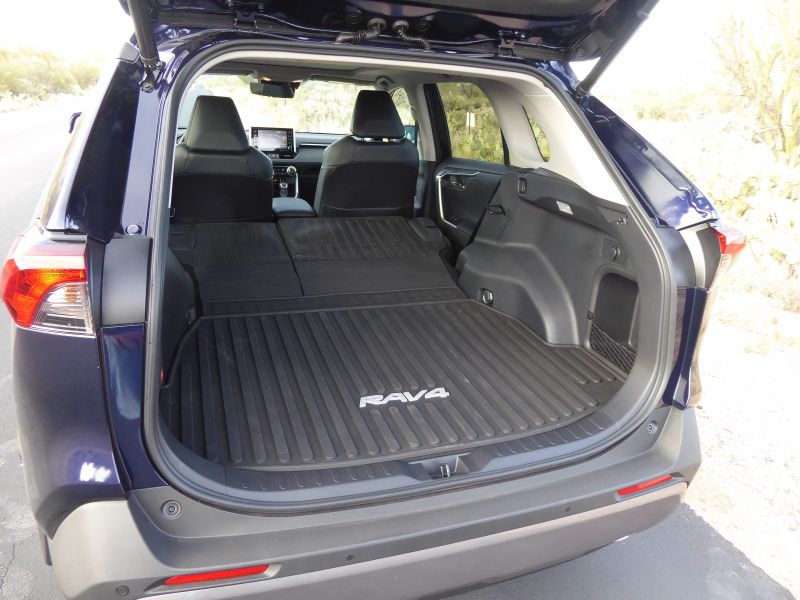
Photo by Ron Sessions
Infotainment System
The RAV4 Hybrid rolls with a standard 7-inch touchscreen in LE and XLE trims with an 8-inch unit in XSE and limited trims along with dynamic imbedded navigation. The standard 6-speaker AM/FM stereo has SiriusXM but no HD Radio with a rockin’ 11-speaker JBL system standard in Limited. A 3-month trial of in-vehicle Wi-Fi is standard. Also standard is advanced voice recognition.
The Santa Fe Hybrid one ups the RAV4 with a standard 8-inch touchscreen in base Blue and mid-level SEL trims that include wireless Apple CarPlay and Android Auto, thereby reducing the tangle of USB cables on the console. It includes an AM/FM stereo, HD Radio, a 3-month trial of SiriusXM, and voice recognition for access to Blue Link connected-car services, phone, maps, messages, and music. Santa Fe Limited trim upgrades to an available wide-screen high-resolution 10.25-inch touchscreen with embedded navigation, as well as access to vehicle and driver-assist settings, and HD Radio traffic-flow and incident data. It comes with an immersive 12-speaker Harman Kardon surround-sound system with and Clari-Fi music restoration technology.
Both the RAV4 and Santa Fe Hybrids come standard with Apple CarPlay and Android Auto cellphone mirroring, although the base Santa Fe system with the 8-inch screen has the benefit of wireless connectivity which eliminates the clutter of USB cables.
: Santa Fe Hybrid
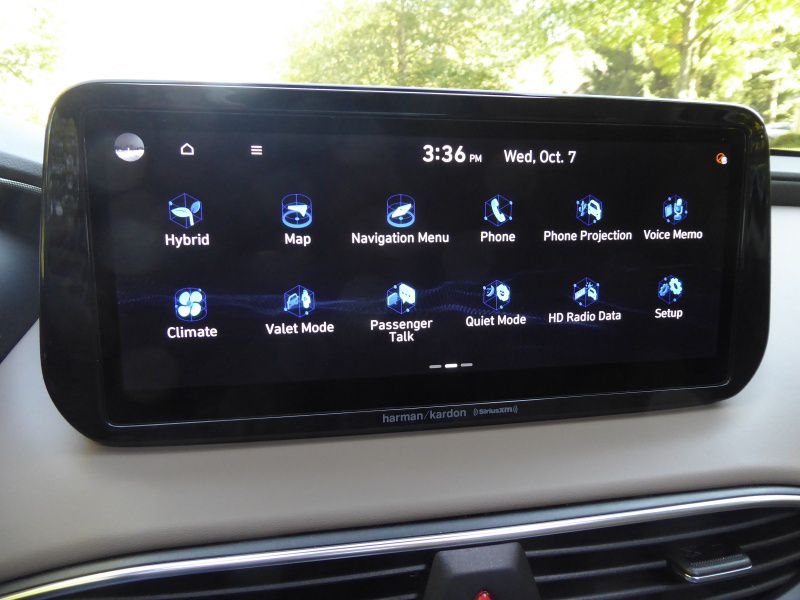
Photo by Ron Sessions
Safety and Driver-Assistive Tech
The RAV4 Hybrid comes standard with a pre-collision system with pedestrian protection, lane departure alert with steering assist, lane tracing assist, automatic high beams, adaptive cruise control and road sign assist. Blind-spot and rear cross-traffic alert systems are standard on all but the LE trim, and front and rear parking assist sensors with automated braking and an overhead 360-degree monitor are available on Limited.
The Santa Fe Hybrid matches the RAV4 Hybrid’s standard safety equipment and adds much more. Its standard blind-spot and rear cross-traffic detection systems include avoidance with active braking. Also standard with the Santa Fe is a driver attention warning system, a safe-exit assist system, and a rear occupant alert system. The Santa Fe Limited trim includes a blind-spot view monitor that provides a live view of the road immediately adjacent to the vehicle’s blind spot when the turn signal for that side is actuated. Also standard on the Santa Fe Limited trim is a surround-view camera that gives an overhead-view of the Santa Fe and its immediate surroundings, as well as Remote Smart Park Assist which helps the owner park the Santa Fe in tight spaces from outside the vehicle, using buttons on the smart key fob.
Optional on the Santa Fe is Highway Driving Assist, which combines lane centering and adaptive cruise control for more relaxed driving on well-marked highways.
: Santa Fe Hybrid
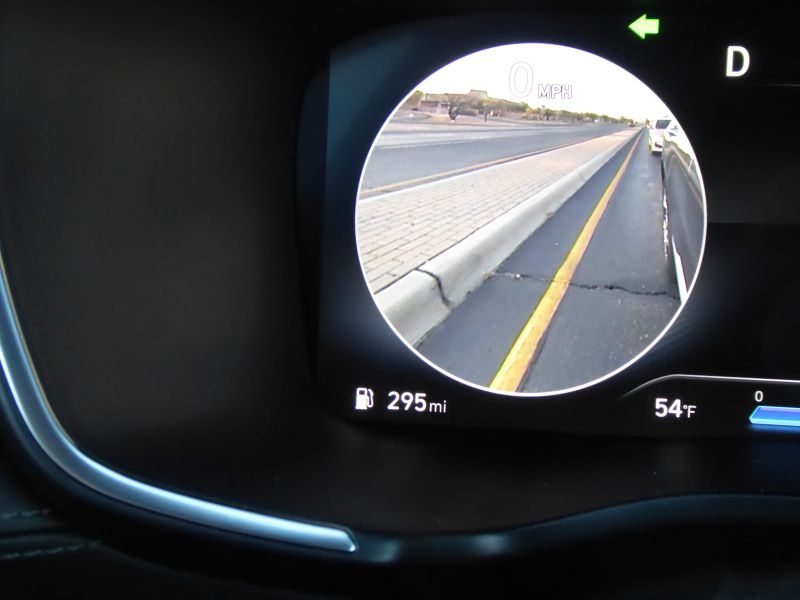
Photo by Ron Sessions
Power and Performance
When it comes to hybrids, no other carmaker has been doing it longer or more successfully than Toyota. In the RAV4 Hybrid, the system consists of a 176-hp 2.5-liter 4-cylinder and three electric motors for a combined system output of 219 hp. One of the electric motors drives the rear wheels, giving the RAV4 Hybrid all-wheel-drive capability. The compact SUV hybrid can accelerate from rest to 60 mph in 7.4 seconds, which is about half a second quicker than the 203-hp gasoline version. Working through a continuously variable transmission, the electric motors give the RAV4 Hybrid a smooth launch but also sometimes a somewhat disconnected feel and sound to the engine.
The Santa Fe Hybrid combines a 177-hp turbocharged 1.6-liter 4-cylinder with a 60-hp electric traction motor resulting in a system output of 226 hp. But the Hyundai works through a conventional 6-speed step-shift transmission, which gives it more of a conventional gas-engine feel with the added instant torque of electric motor boost as it accelerates up through the gears. A conventional driveshaft gives the Santa Fe Hybrid all-wheel-drive capability. The larger Santa Fe Hybrid weighs in about 700 pounds more than the RAV4 Hybrid, so despite its extra power, it is a tad slower to the 60 mph mark than the RAV4 Hybrid at 7.5 seconds.
: Tie
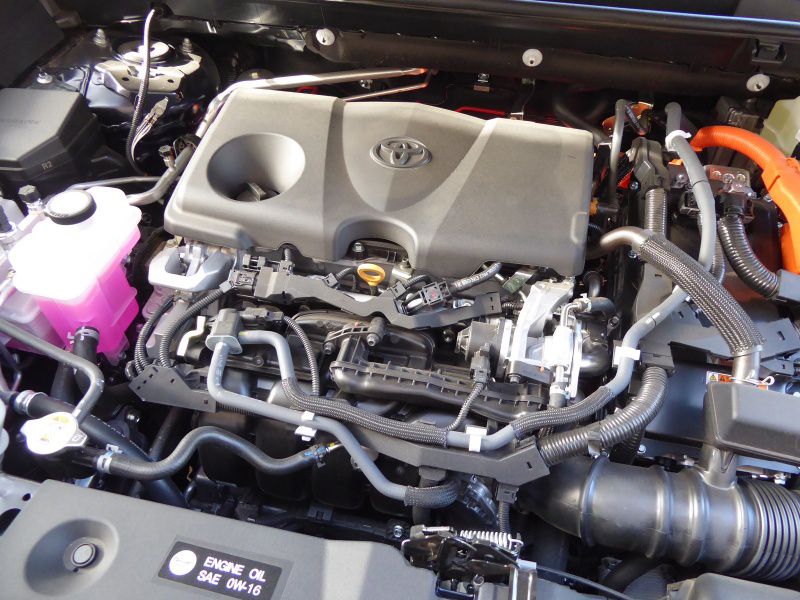
Photo by Ron Sessions
Fuel Economy
The major reason people buy hybrids is improved fuel economy over gas-powered versions. Any increase in performance is incidental. Here, the RAV4 Hybrid shines with 2021 EPA mileage estimates of 41 mpg city/38 mpg highway/40 mpg combined.
The Santa Fe Hybrid, while delivering greatly improved fuel economy compared to the gas-powered versions of Hyundai’s mid-size SUV, doesn’t even come close to netting the EPA estimates of the RAV4 Hybrid. Its 2022 ratings of 36 mpg city/31 mpg highway/34 mpg combined for the base Blue model and 33 mpg city/30 mpg highway/32 mpg combined for the SEL and Limited trims are around 15% to 20% lower than those of the 2021 RAV4 Hybrid.
: RAV4 Hybrid
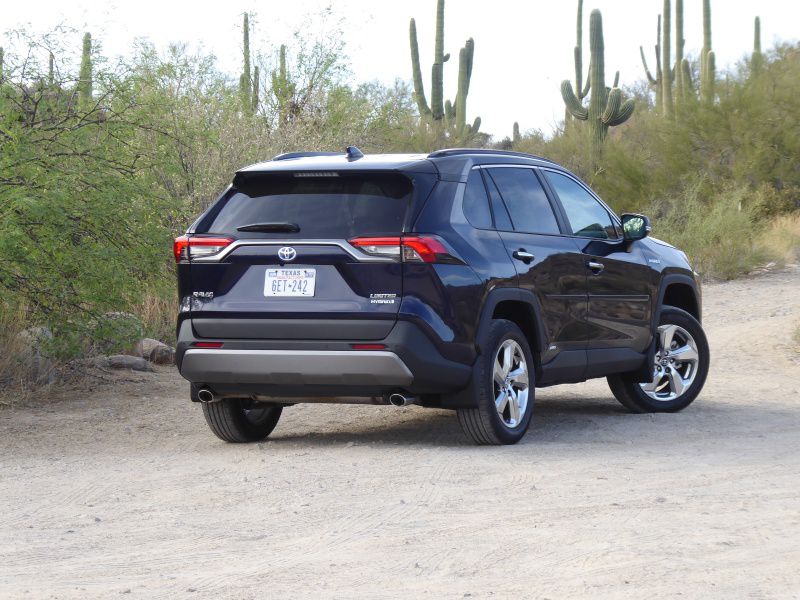
Photo by Ron Sessions
Value
Both the compact Toyota RAV4 Hybrid and mid-size Hyundai Santa Fe Hybrid offer good value for their respective segments, delivering a comprehensive list of standard comfort and convenience amenities and infotainment and driver-assistive systems. Including the $1,225 destination charge, the 2022 Santa Fe Hybrid lineup consists of the base $34,975 Blue, nicely equipped $39,035 SEL, and range-topping $41,385 Limited.
The 2021 RAV4 Hybrid model range is a bit wider, including (with the $1,175 destination charge) the basic $29,715 LE and volume-selling $31,010 XLE, well-equipped $34,115 XLE Premium, sporty $36,065 XSE, and top-of-the-line $38,465 Limited.
So with pricing ranging about $2,600 to $5,100 less than the Santa Fe Hybrid, from a pure dollars and cents perspective, the RAV4 Hybrid is the better value.
: RAV4 Hybrid
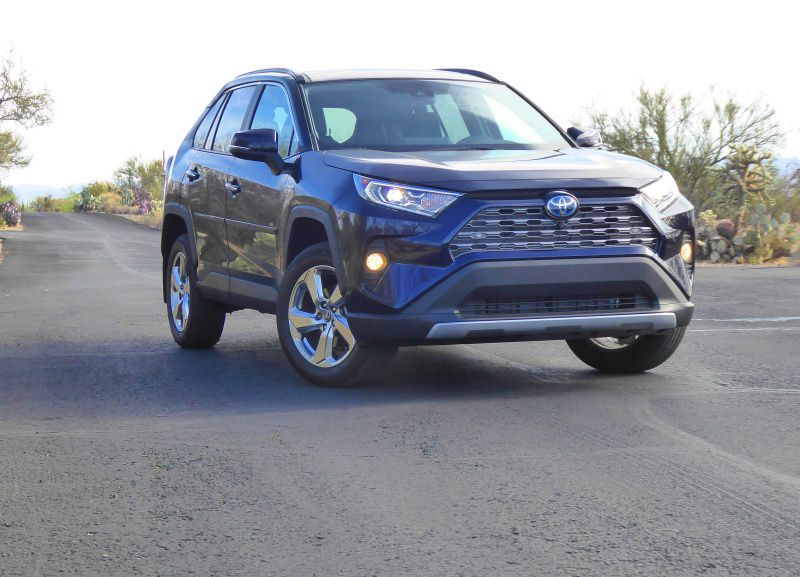
Photo by Ron Sessions
Verdict
When you factor in additional comfort and convenience content, and more advanced infotainment and driver-assistive and safety technology of the Santa Fe Hybrid, however, the comparison tightens considerably. The RAV4 Hybrid is a solid choice for buyers with a strong value proposition, as its sales numbers bear out. And the RAV4 Hybrid is the unmistakable fuel economy king in this matchup, a big deal with buyers of hybrid vehicles. But the Santa Fe Hybrid with the aforementioned added features and more advanced content, as well as its more upscale cabin materials and fitments, is worth the extra money for some buyers looking for a little something extra.
: Tie
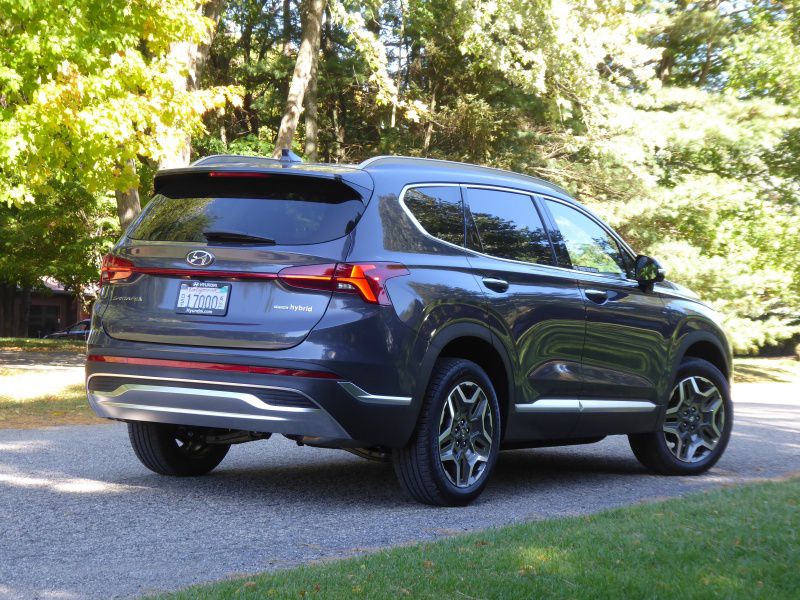
Photo by Ron Sessions